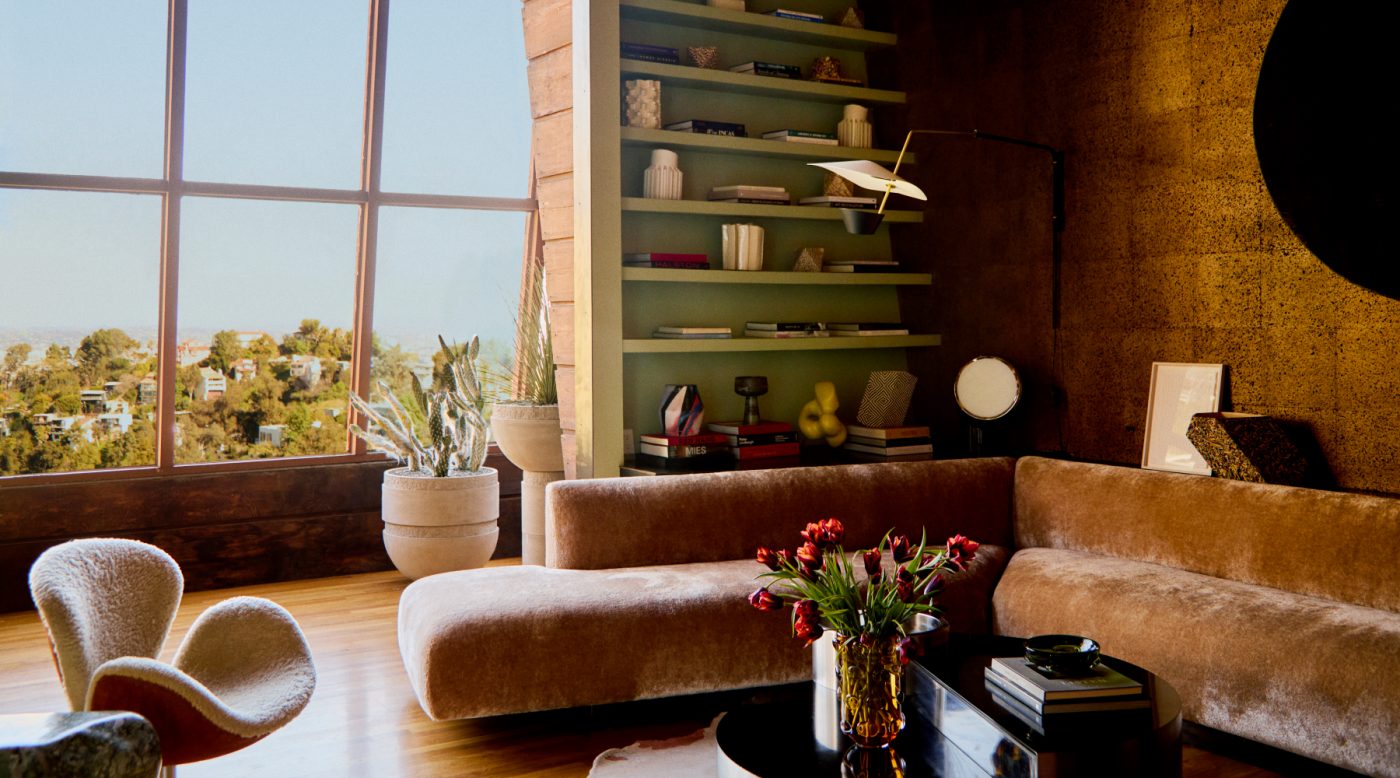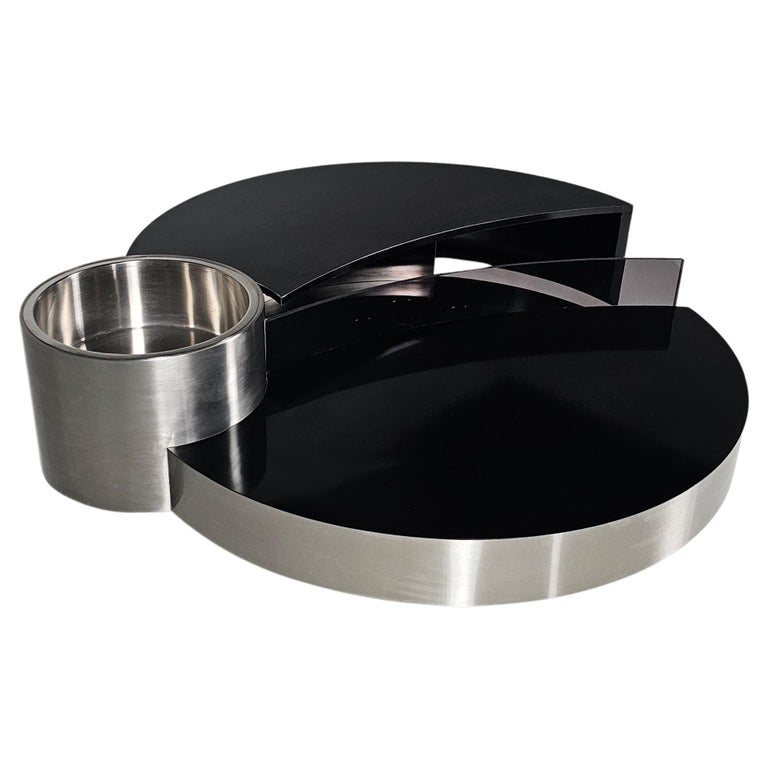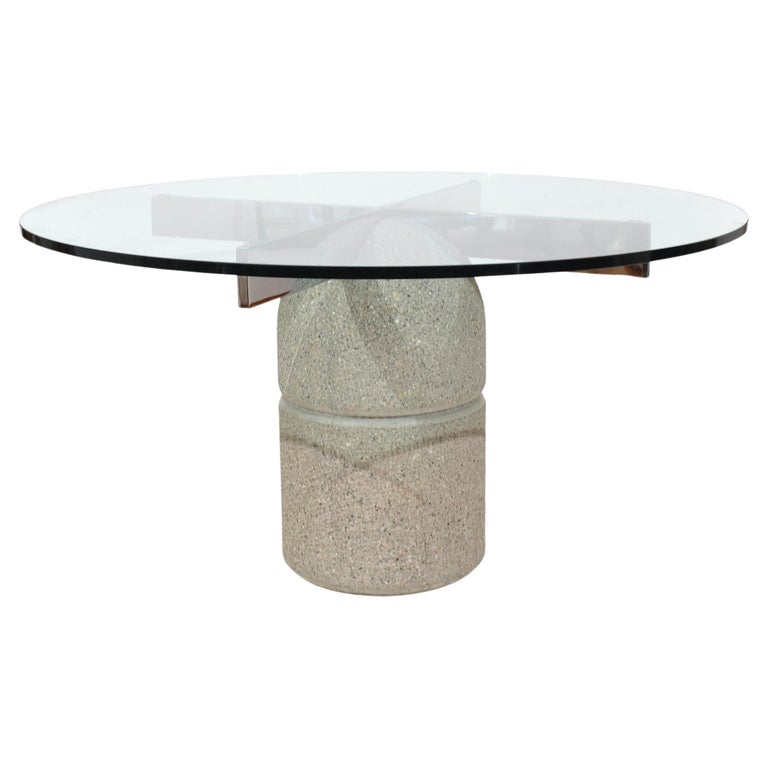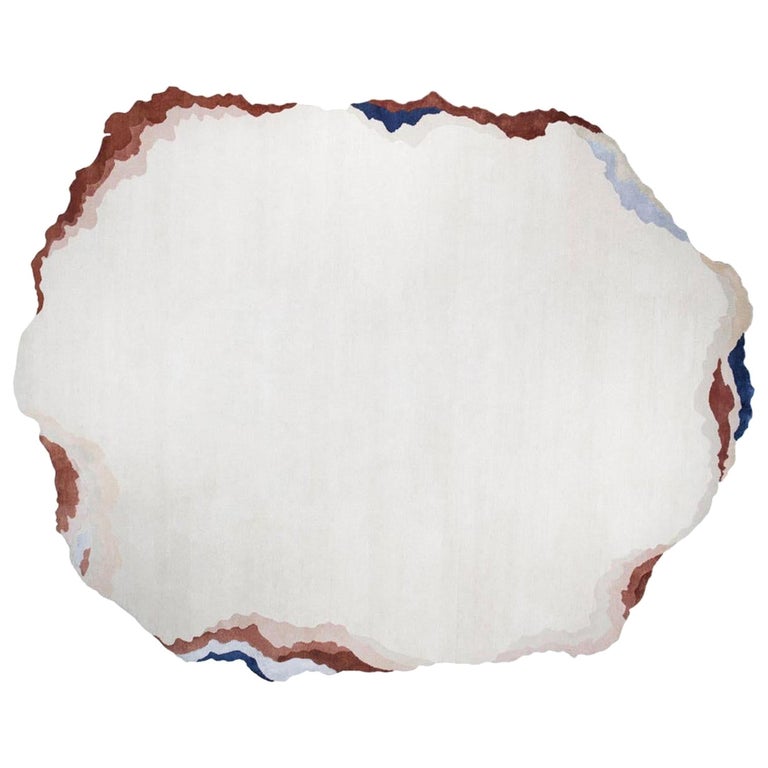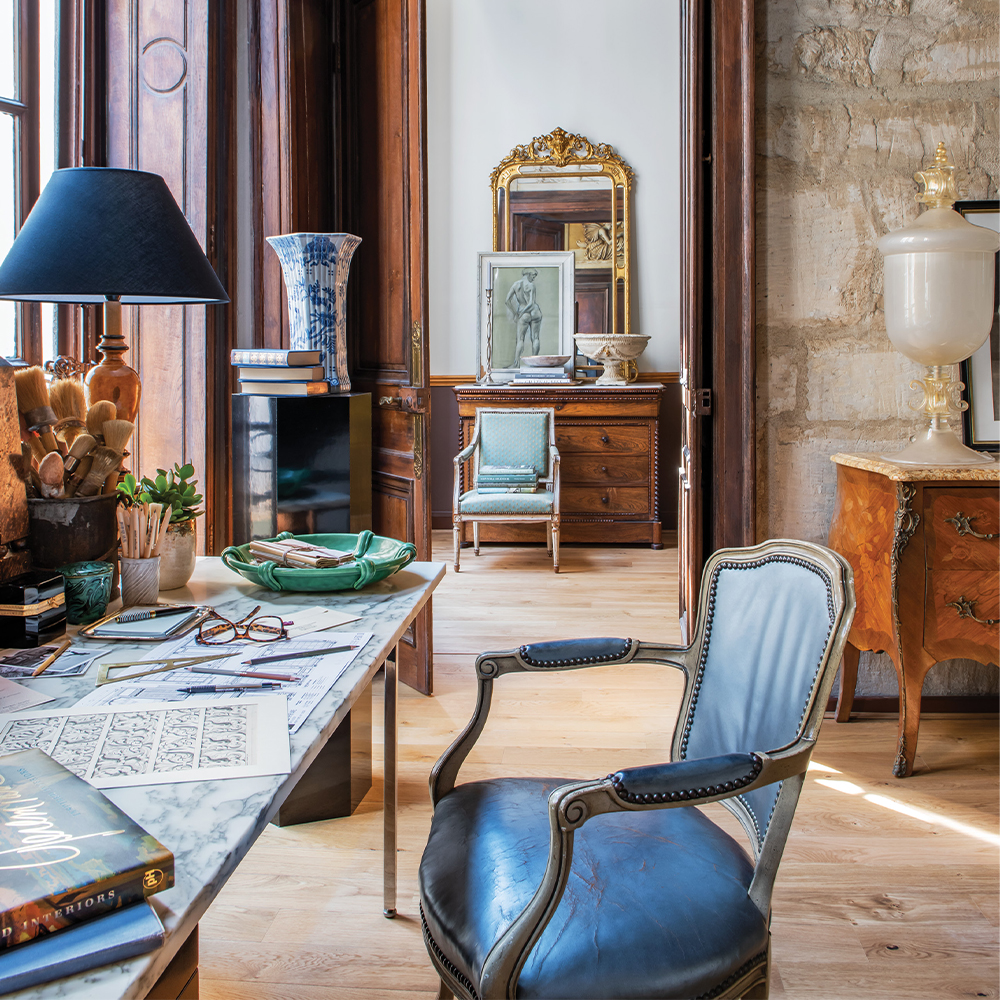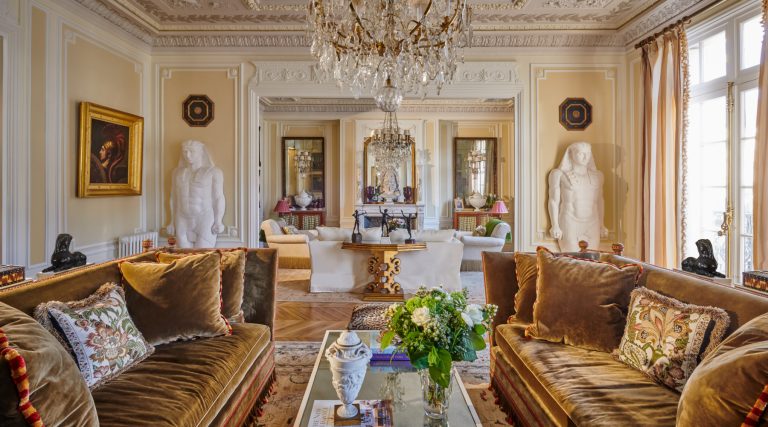April 14, 2024In the first half of the 20th century, Southern California offered newly arrived designers and architects unparalleled creative freedom and business opportunities. This was true not only for European émigrés, including modernists Richard Neutra, Rudolph Schindler, Kem Weber, Albert Frey and Paul László, but also for Midwestern mavericks like Charles Eames, John Lautner and the Kansas City, Missouri–born Archibald Quincy Jones.
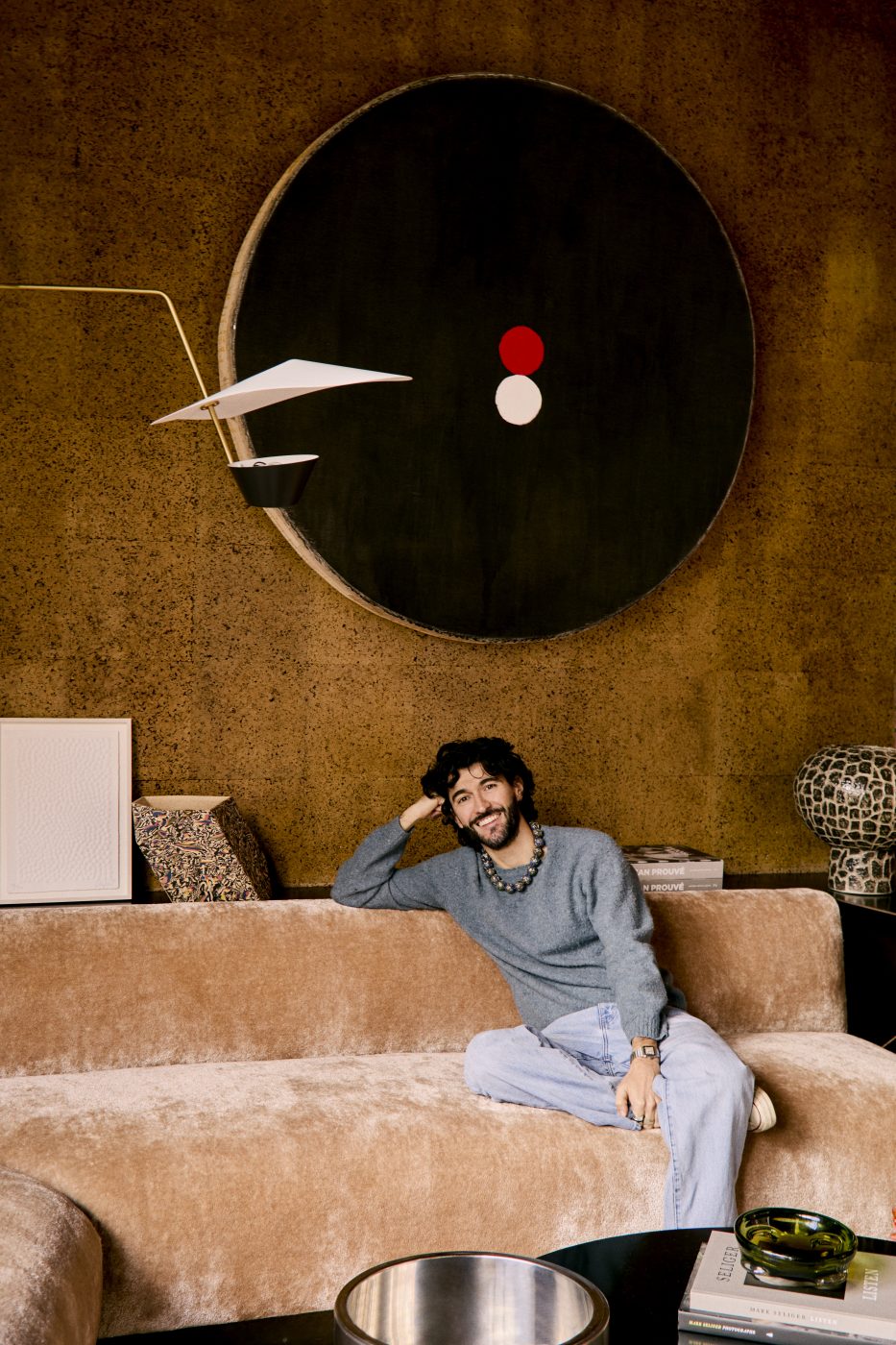
Better known as A. Quincy Jones, the prolific architect got his start working with Paul R. Williams, participated in the famed Case Study program, pioneered modern subdivisions with developer Joseph Eichler and took on such plum commissions as Sunnylands, the 200-acre Rancho Mirage estate of Ambassador Walter and Leonore Annenberg, whose interiors are by William Haines.
“A. Quincy Jones was an architect known for his seamless integration of nature into his designs, blurring the lines between indoor and outdoor living,” notes designer Giampiero Tagliaferri, who, for a bachelor client, recently completed the first phase of a restoration and redecoration of the iconic 1938 Jones House & Studio #1 in Laurel Canyon. “He experimented with structural elements and materials that also became decor.”
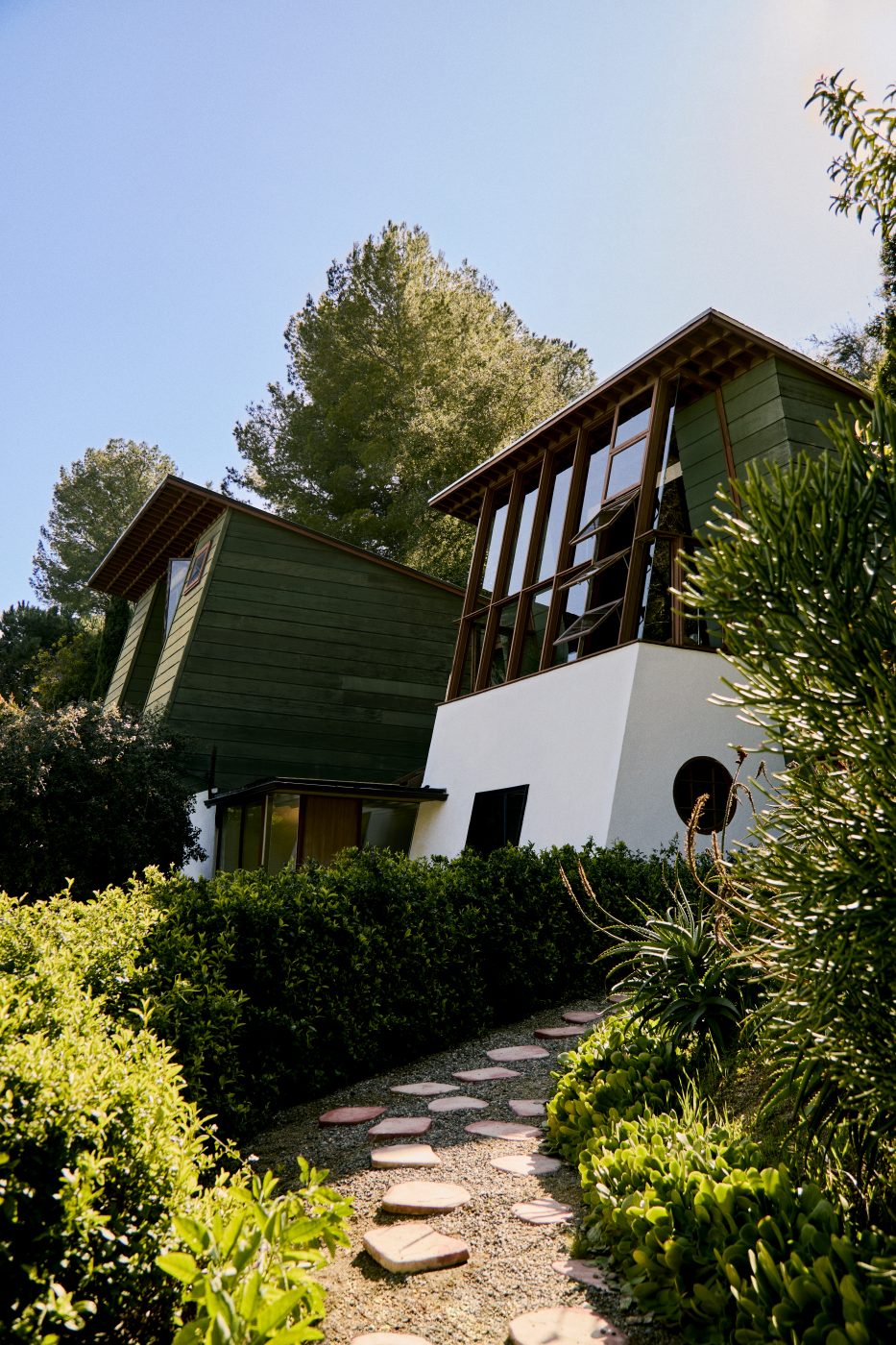
Founder of an eponymous architectural and interior design practice with studios in L.A. and Milan, the Italian-born, Los Angeles–based Tagliaferri cites the structure’s “absolutely enormous” window walls, floor-to-ceiling redbrick fireplace and cork-clad wall as among the architectural innovations introduced by Jones that became popular decorative elements in post–World War II modern homes.
Designed as a duplex by Jones and his wife, Ruth Schneider, shortly after they graduated from architecture school (it became his residence and studio after they divorced), the dwelling nestles at acute angles into the hillside, maximizing western sunset views and creating intriguing interior geometries with slanting walls and bookcases.
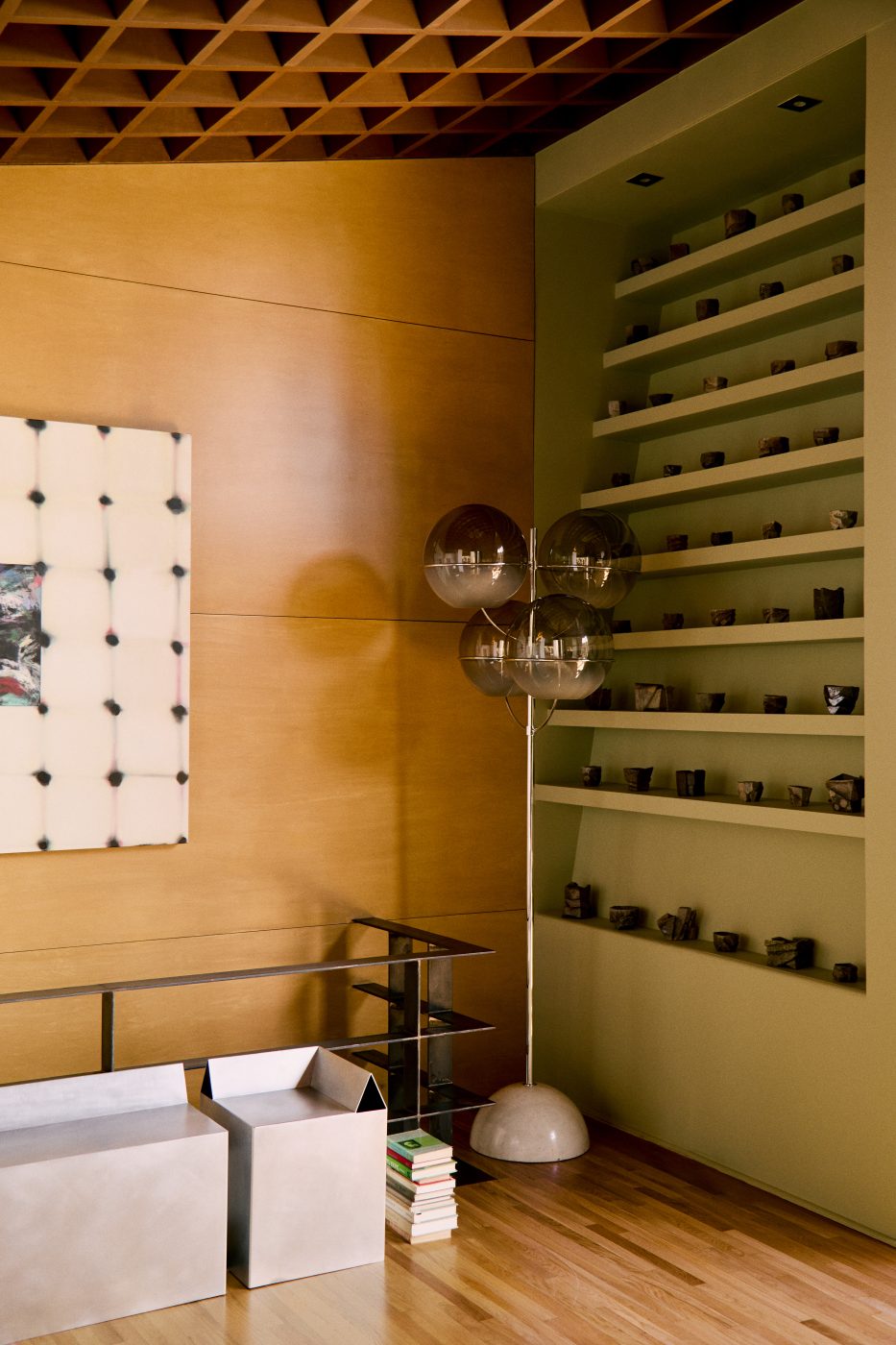
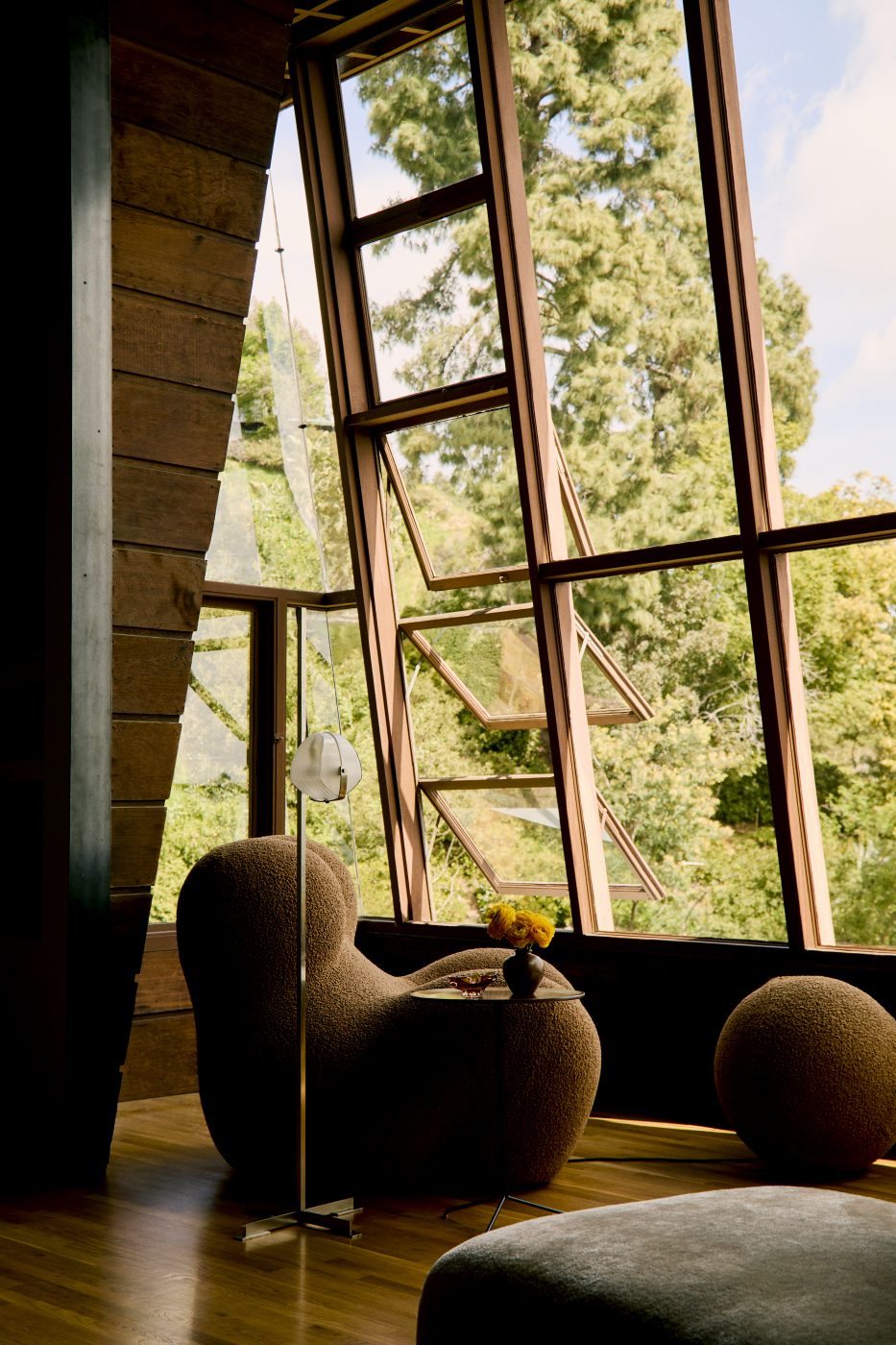
Later owners of the house had painted the shelves stark white, “which was a punch in the face,” Tagliaferri says, recalling his first impression of the bookcases in the 600-square-foot living and dining area, which sits a floor above the primary suite. “It felt alien for a house that has such a woodsy, country-cabin aspect.”
Tagliaferri — a member of the recently announced 2024 1stDibs 50 — began the project by having the wood floors and ceiling, brick fireplace and cork wall restored, and the bookshelves painted a sage green to establish an earthy color palette that reflects the scenery outside. Then the designer, along with the six-person team in his Los Angeles studio, furnished the open-plan space with a mix of sculptural contemporary pieces and classic designs from the 1950s to 1970s, many sourced through 1stDibs.
These include a circa 1952 Pierre Guariche G25 sconce with a decidedly space-age flair and a pair of Swan chairs designed by the great Dane Arne Jacobsen in 1958. To complement these, Tagliaferri leaned into his sweet spot, 1970s Italian design. He selected pieces by such famed Milanese modernists as Gaetano Pesce, Osvaldo Borsani, Vico Magistretti and Achille and Pier Giacomo Castiglioni, as well as lesser-known talents like Eugenio Gerli, Massimo Papiri and Cini Boeri.
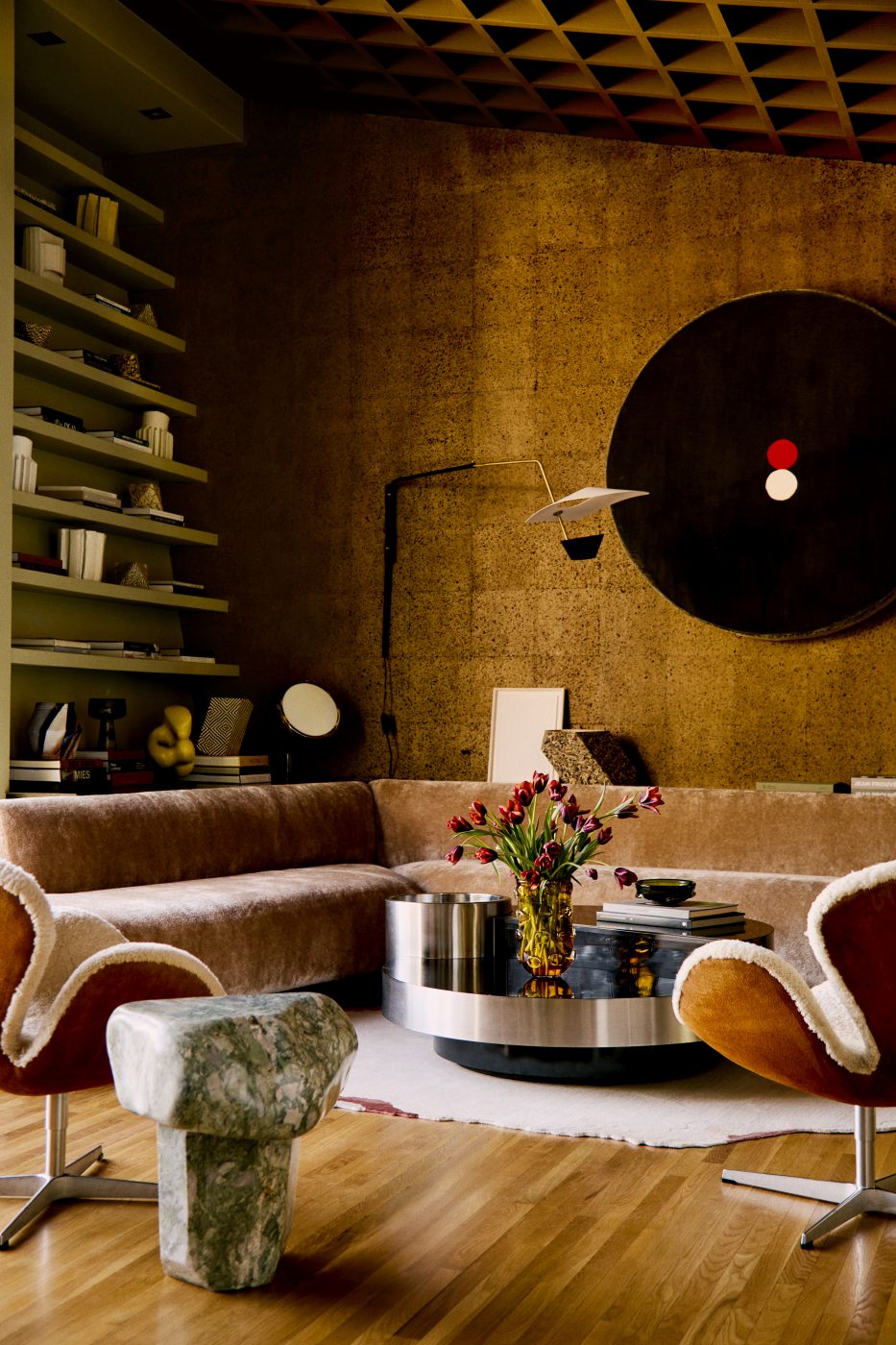
“I hate when a house is a pure time capsule,” Tagliaferri says. “The story I wanted to tell is that the house is still so relevant today. Playing with juxtapositions of furniture that were not in production when the house was built adds sophistication and makes it feel more contemporary.” He likens his approach to the work of architect and designer Gae Aulenti at the Altana Palazzo Pucci in Florence and the Torre del Grillo in Rome. “She was the master of keeping the identity of an old house and making it completely modern.”
Born just before Ettore Sottsass founded the influential Memphis movement, Tagliaferri grew up outside Milan and became enamored of design when his mother commissioned an architect to build an angular, single-story modernist country house. “It was the weird house of the village, with Aulenti lamps, Magistretti chairs, furniture by the Eameses and Eero Saarinen and things my mom liked, like an old credenza from the eighteen hundreds,” he says, beaming with pride.
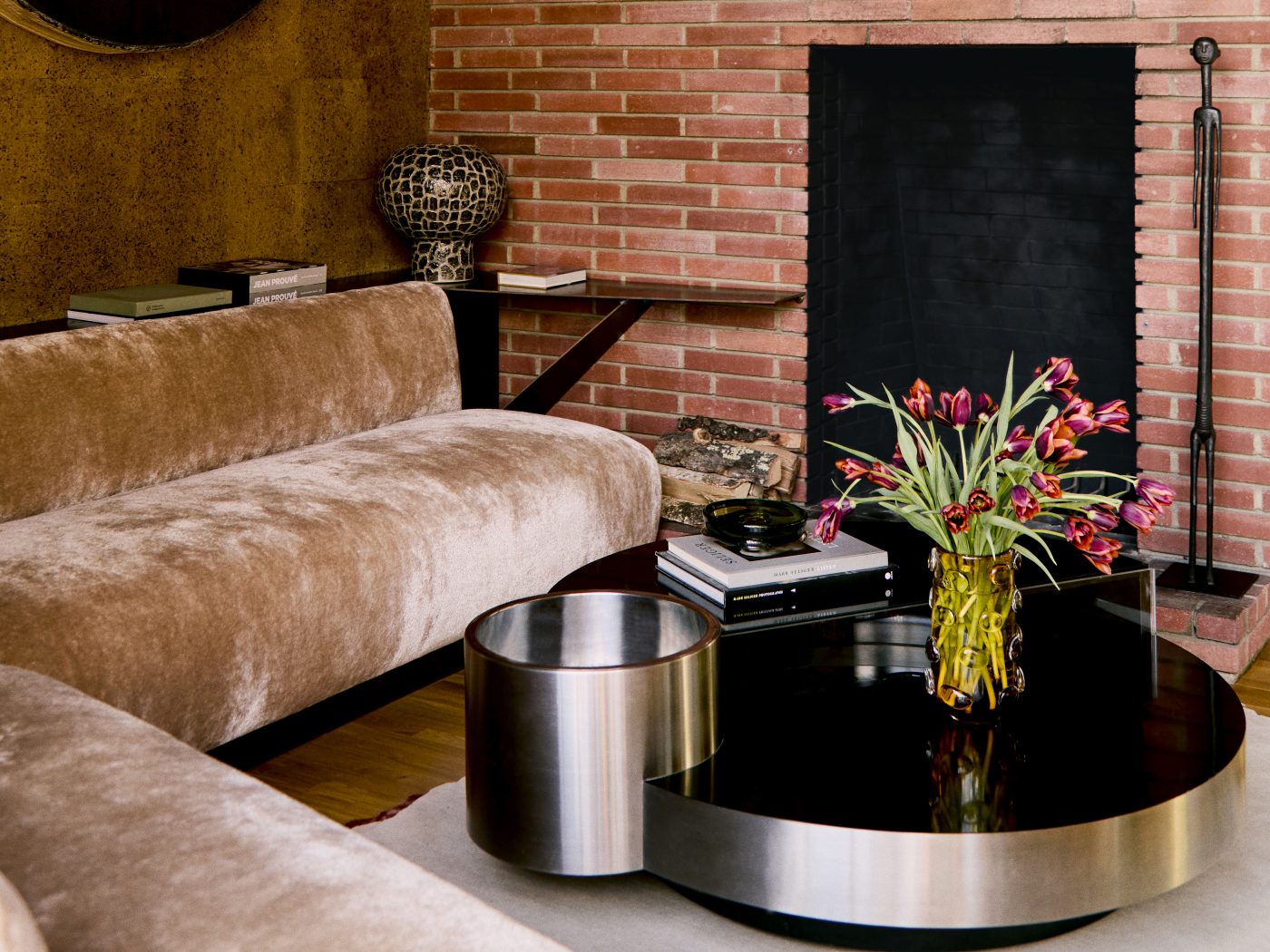
At Università Bocconi in Milan, Tagliaferri studied business administration for fashion and design companies. After becoming the creative director for Oliver Peoples eyewear, a role that included store design, he moved to Los Angeles in 2016 and became “obsessed” with homes by Lautner, Schindler and Neutra, which he used as backdrops for campaign photography until his departure from the brand, in 2022.
During that time, he “really came to understand the idea of mid-century indoor-outdoor style and how California architecture and design set the tone for modern living,” he says. “The European approach is driven by aesthetics. California is more casual and driven by functionality. It’s very important to have a balance. A well-designed space must be beautiful and usable.”
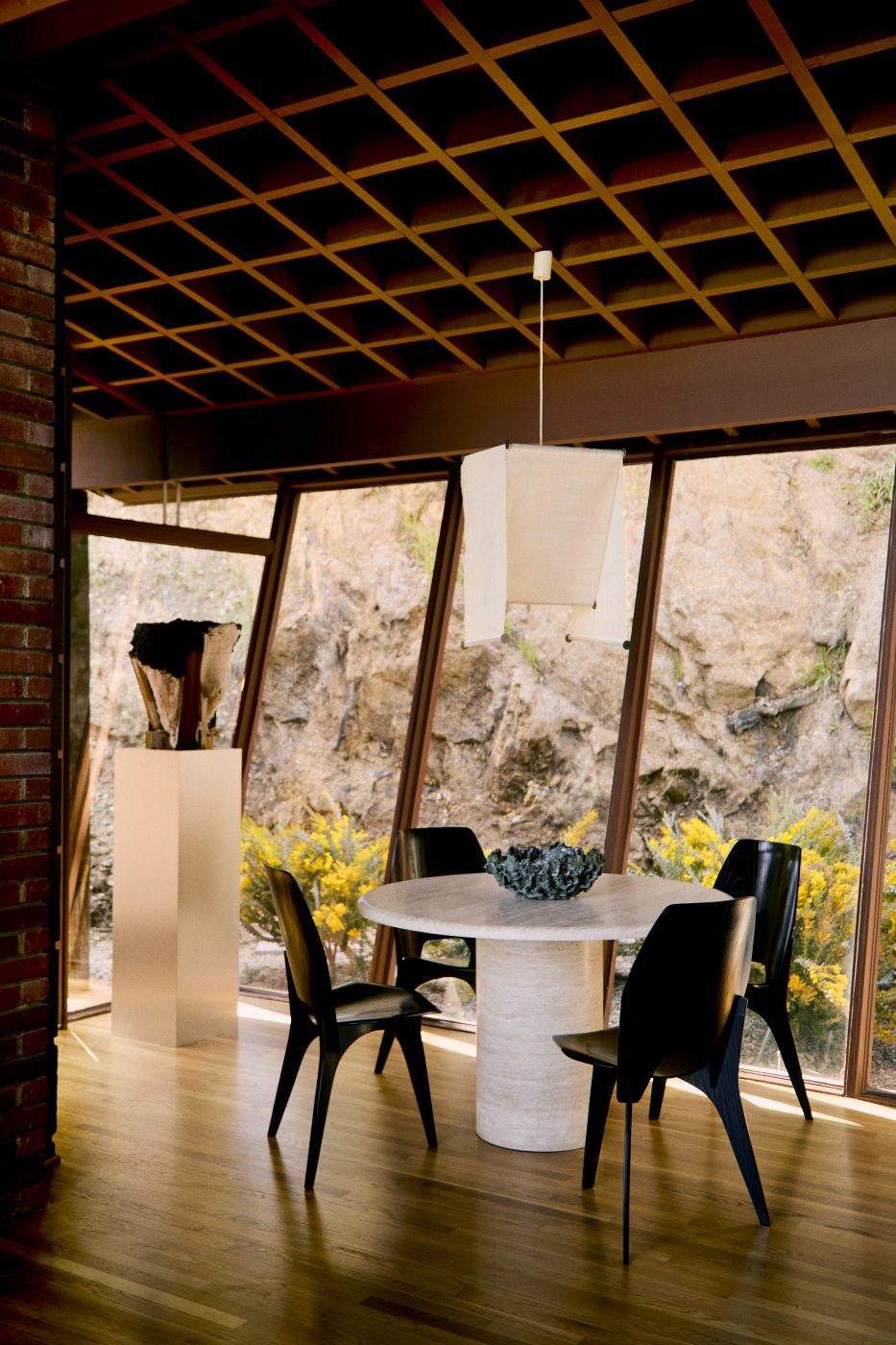
A case in point at the Jones house: In a corner facing the 15-foot windows, Tagliaferri placed an adjustable Magistretti Omicron reading light and a rosewood-topped side table by Borsani next to Pesce’s bulbous, late 1960s La Mamma UP chair. “In Milan, I could’ve put an important sculpture in that corner, but why not make that a comfortable space to look at the view?” the designer asks. “Against all that linear architecture, the chair is a crazy juxtaposition that makes sense. It’s all curvy and soft and inviting, extremely comfortable for such a strong piece of design.”
In the dining area, Tagliaferri paired a simple, columnar travertine table of his own design with distinctive chairs that Gerli created for Tecno in the 1950s. “They are not screaming at you when you enter the room. You don’t notice right away that they have only three legs and the seat is a hexagon,” he says. The unique form of the chairs and the shape of the slanted windows in the space complement the 1970s Castiglioni Teli pendant for Flos.
“I collect vintage lighting — it’s my number-one passion,” says Tagliaferri, who stationed a Lyndon floor lamp by Magistretti to illuminate a Ross Bleckner painting and a contemporary aluminum bench.
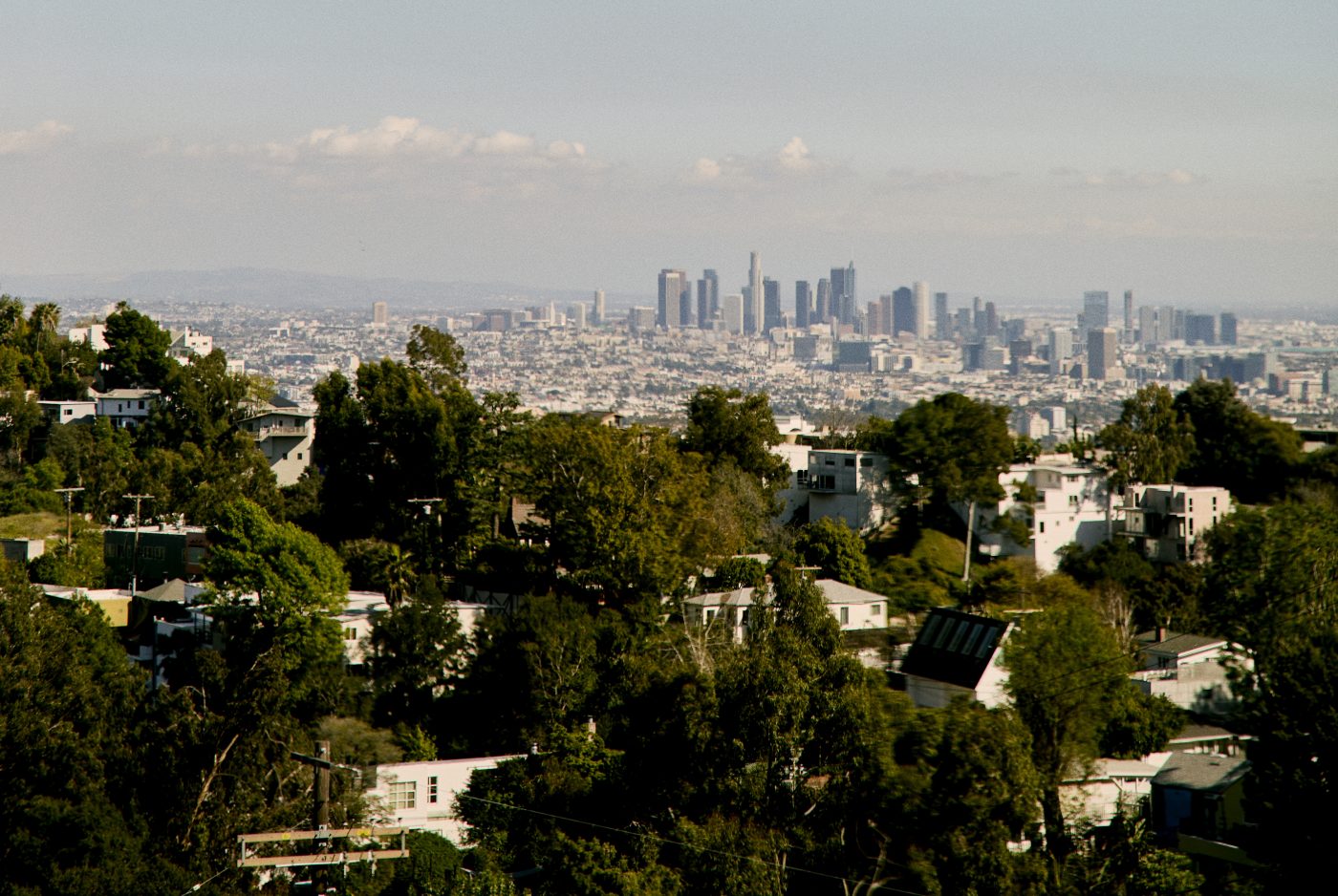
In the living room, he added a Zeus table lamp by pioneering Italian female architect Cini Boeri as an accent piece. That space is defined by a built-in sofa that Tagliaferri covered in velvet with a reflective sheen. “The changing daylight brings the magic,” the designer says. It sits on a custom wool rug bordered in silk from Atelier Février across from a pair of vintage Swan chairs, handsomely upholstered in shearling, and a 1970s coffee table with an integrated bar and ice bucket, designed by Massimo Papiri.
“Part of my design aesthetic is to create tension,” Tagliaferri says of mixing the cold, hard stainless-steel coffee table with the warm, fuzzy sofa and chairs. “At our studio, we believe in layering design elements to add complexity and depth rather than sticking to a single era or style.”
